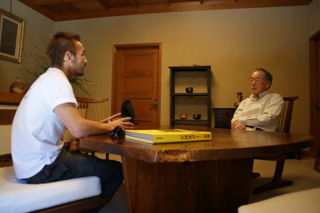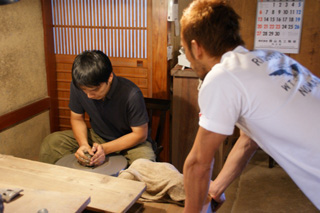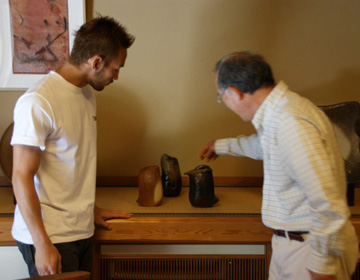 |
Starting with preparing the clayBizen-yaki has a long history. It is said to have begun in the late 12th century, and is counted as one of the six old medieval pottery representing Japan. |
Baked at high temperature for long periodsThere is also a color variation called “yohen”. Bizen-yaki is baked in a kiln at 1300 degrees Celsius for 2 weeks. The part buried under the ashes becomes black or blue while the part exposed to flames turns red ochre. The color may depend on how the pieces are placed in the kiln, but coincidence is a large factor making no piece identical. The patterns which emerge from this process can even seem majestic. |
 |
ACCESS
- Pottery Artist Jun Isezaki
- Bizen, Okayama
 Discovering Japan [Nihon] through authentic craftsmanship [Honmono]
Discovering Japan [Nihon] through authentic craftsmanship [Honmono]